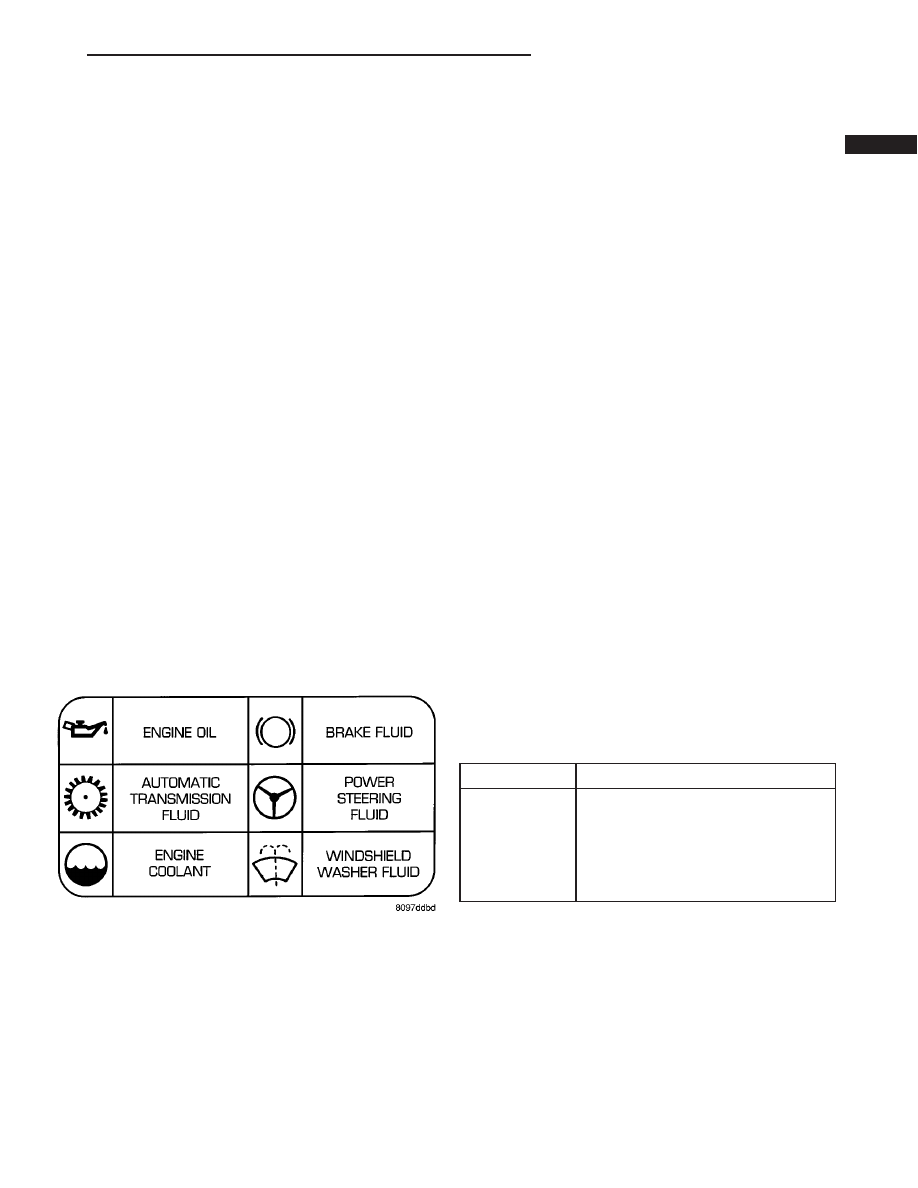Chrysler Sebring, Stratus sedan, Sebring Convertible. Manual - part 256

LUBRICATION & MAINTENANCE
TABLE OF CONTENTS
page
page
INTERNATIONAL SYMBOLS
. . . . . . . . . . . . . . . . . . . . . . . . . . 1
PARTS & LUBRICANT RECOMMENDATION
. . . . . . . . . . . . . . . . . . . . . . . . . 2
FLUID TYPES
. . . . . . . . . . . . . . . . . . . . . . . . . . 2
. . . . . . . . . . . . . . . . . . . . . 4
FLEXIBLE FUEL VEHICLES (2.7L ENGINES
ONLY) . . . . . . . . . . . . . . . . . . . . . . . . . . . . . . . 4
AUTOMATIC/MANUAL TRANSAXLE FLUID
. . . . . . . . . . . . . . . . . . 5
FLUID CAPACITIES
. . . . . . . . . . . . . . . . . . . . . 7
FLUID FILL/CHECK LOCATIONS
. . . . . . . . . . . . . . . . . . . . . . . . . . 7
LUBRICATION POINTS
. . . . . . . . . . . . . . . . . . . . . . . . . . 7
MAINTENANCE SCHEDULES
MAINTENANCE SCHEDULES - EXPORT
HOISTING
JUMP STARTING
STANDARD PROCEDURE - JUMP STARTING
TOWING
INTERNATIONAL SYMBOLS
DESCRIPTION
DaimlerChrysler Corporation uses international
symbols to identify engine compartment lubricant
and fluid inspection and fill locations (Fig. 1).
PARTS & LUBRICANT
RECOMMENDATION
DESCRIPTION
LUBRICANT RECOMMENDATIONS
Chassis
Component
Fluid, Lubricant, or Genuine Part
Steering Gear
& Linkage, Ball
Joints, Prop
Shafts &
Yokes, Wheel
Bearings
Mopar
T
Multi-Purpose Lubricant
NLGI Grade 2 EP, GC-LB
Fig. 1 INTERNATIONAL SYMBOLS
JR
LUBRICATION & MAINTENANCE
0 - 1